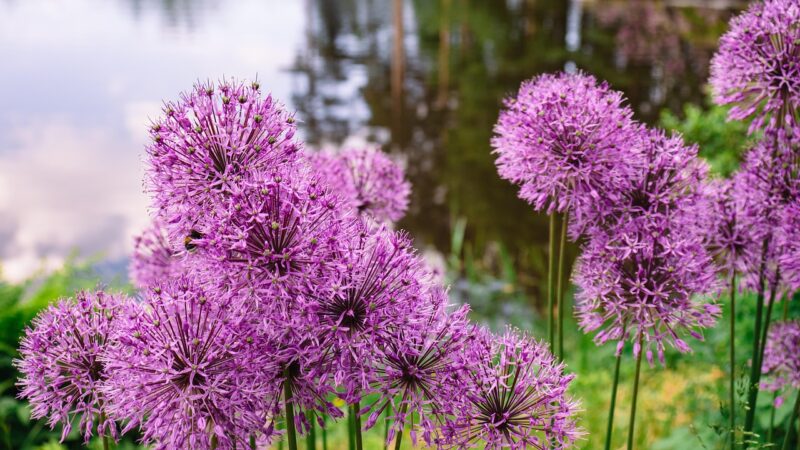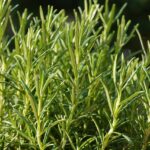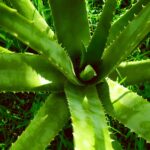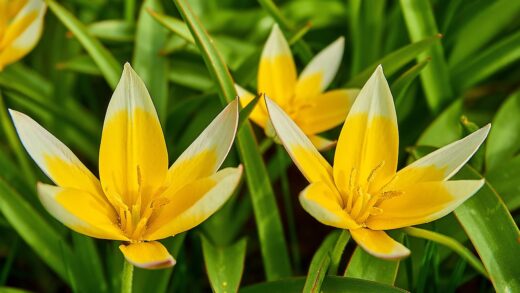Watering and fertilizing of Persian onion

Providing the appropriate balance of moisture and nutrients is fundamental to cultivating vigorous and floriferous specimens of Allium aflatunense. These majestic ornamental onions have specific requirements that are closely tied to their annual growth cycle, demanding attention during their active growth phase and a period of benign neglect during dormancy. Understanding when to water and when to withhold it is perhaps the most critical aspect of their care, as improper moisture management is the most common cause of failure. Similarly, a well-timed application of the correct fertilizer can significantly enhance the plant’s performance, leading to larger flower heads and healthier bulbs that will perennialize reliably. This article delves into the essential details of watering and fertilizing the Persian onion to help you achieve a truly stunning garden display.
Understanding the water needs of Allium aflatunense
The water requirements of Allium aflatunense are not constant throughout the year; instead, they fluctuate dramatically in line with the plant’s growth cycle. The period of greatest need is in the spring, from the moment the first shoots emerge until the flowers begin to fade. During this time, the plant is undergoing rapid development, producing its broad leaves and the tall, robust stem that will support the large flower head. Consistent and adequate moisture in the soil is crucial during this phase to support this vigorous growth and ensure the plant reaches its full potential.
Conversely, once the flowering period is over and the foliage begins to yellow and wither, the plant’s need for water declines sharply. This is the beginning of its summer dormancy period, a natural part of its lifecycle that is an adaptation to the arid summer conditions of its native habitat in Iran and Central Asia. During this dormant phase, the bulb requires warm and dry conditions. Continuing to provide supplemental water during the summer can be highly detrimental, as it creates an environment conducive to bulb rot and other fungal diseases, which can easily kill the dormant bulb.
The type of soil in your garden will also heavily influence your watering practices. In light, sandy soils that drain very quickly, you may need to water more frequently during the spring growth period than you would in a heavier loam soil that retains moisture for longer. The key is to monitor the soil moisture rather than adhering to a rigid schedule. The aim is to keep the soil consistently moist but not saturated. A simple test is to feel the soil a few inches below the surface; if it is dry, it is time to water.
It is also important to consider natural rainfall. During a wet spring, you may not need to provide any supplemental water at all. Overwatering is a far greater risk to Allium aflatunenums than underwatering. The bulbs have excellent storage capacity and are relatively drought-tolerant once established. Always err on the side of caution and ensure the soil has a chance to dry out slightly between waterings to maintain a healthy balance of moisture and oxygen in the root zone.
More articles on this topic
Best practices for effective irrigation
When you do need to water your Persian onions during their spring growth phase, the most effective method is to water deeply and infrequently. A light sprinkling of water on the soil surface is inefficient, as it only moistens the top layer and may not reach the bulb’s root zone, which can be 15-20 centimeters deep. This can encourage shallow root development, making the plant less resilient. Instead, apply water slowly and for a prolonged period, allowing it to soak deep into the soil profile.
The timing of your watering can also make a difference. Watering early in the morning is generally considered the best practice for most garden plants, including alliums. This allows the water to be absorbed by the roots throughout the day and ensures that any moisture that splashes onto the foliage has ample time to evaporate in the sun. Watering in the evening can leave the foliage damp overnight, which can create a more favorable environment for the development of fungal diseases like downy mildew or rust.
Directing water to the base of the plant is another important best practice. Using a soaker hose, drip irrigation, or a watering wand allows you to apply water directly to the soil where it is needed most, minimizing wastage through evaporation and keeping the foliage dry. This targeted approach is not only more water-efficient but also further reduces the risk of foliar diseases. It helps to ensure that the entire root zone receives an even supply of moisture.
As the season progresses towards summer and the foliage begins to die back, you must taper off your watering routine. Gradually reduce the frequency of watering as the leaves turn yellow, and stop supplemental irrigation completely once the foliage has withered. In climates with significant summer rainfall, the importance of having planted the bulbs in exceptionally well-draining soil cannot be overstated. This is the single most important factor in ensuring their survival through a wet summer dormancy.
More articles on this topic
The role of nutrients in plant health
Proper nutrition is vital for the health and performance of Allium aflatunense, directly impacting the size of the bloom, the strength of the stem, and the long-term viability of the bulb. The three primary macronutrients—nitrogen (N), phosphorus (P), and potassium (K)—each play a distinct and important role. Nitrogen is essential for leafy, vegetative growth. Phosphorus is crucial for root development, energy transfer, and flowering. Potassium contributes to the overall vigor of the plant, disease resistance, and the efficient movement of water and nutrients.
For a bulbous plant like the Persian onion, the focus of fertilization should be on supporting strong bulb and flower development rather than promoting excessive foliage. For this reason, a fertilizer that is high in phosphorus and potassium relative to its nitrogen content is ideal. Excessive nitrogen can lead to an overproduction of soft, lush leaves at the expense of the flower. It can also result in weaker stems and can make the plant more susceptible to pests and diseases.
The nutrient reserves stored within the bulb itself are what fuel the initial emergence of growth in the spring. The purpose of adding fertilizer is to replenish the nutrients in the soil that the plant consumes during its intense growth and flowering period. This replenishment ensures that after the foliage dies back, the newly-formed bulb for the following season is large, healthy, and packed with enough energy to produce another spectacular display.
Beyond the primary macronutrients, healthy soil rich in organic matter will also provide a range of essential micronutrients. Amending the soil with compost or well-rotted manure at the time of planting and as an annual top-dressing is one of the best ways to ensure a balanced supply of all necessary nutrients. Healthy soil biology, fostered by organic matter, also helps to make these nutrients more available to the plant’s roots, creating a sustainable system for plant nutrition.
Choosing and applying the right fertilizer
When selecting a fertilizer for Allium aflatunense, opt for a balanced granular formula designed for bulbs or flowering perennials. A slow-release formulation is particularly beneficial as it will provide a steady supply of nutrients over several weeks, corresponding with the plant’s main growth period. Look for a fertilizer with an NPK ratio where the first number (nitrogen) is lower than or equal to the second two numbers (phosphorus and potassium), for example, a 5-10-10 or 10-10-10 blend.
An excellent organic alternative is bone meal, which is a superb natural source of phosphorus. It can be mixed into the soil at the bottom of the planting hole when you first plant the bulbs. For established plantings, it can be gently worked into the soil surface around the emerging shoots in the spring. Another beneficial organic amendment is wood ash from a fireplace or bonfire (from untreated wood only), which is a good source of potassium and also helps to raise the soil pH slightly, creating the alkaline conditions that alliums prefer.
The application of fertilizer should be done carefully to avoid damaging the plant. For granular fertilizers, scatter the recommended amount evenly on the soil surface around the base of the plants, avoiding direct contact with the emerging leaves or stems. After application, gently rake the granules into the top layer of soil and water the area well. This helps to activate the fertilizer and begin the process of moving the nutrients down into the root zone where they can be absorbed.
It is critical to avoid over-fertilizing, as this can be more harmful than not fertilizing at all. Applying too much fertilizer can “burn” the plant’s roots and disrupt the nutrient balance in the soil. Always follow the application rates specified on the product packaging. A single application in early spring is usually sufficient for the entire year. There is no benefit to fertilizing after the plant has flowered, as it is beginning to enter its dormant phase and will not be able to utilize the extra nutrients.
Seasonal feeding schedules
The feeding schedule for Allium aflatunense is simple and concentrated in one key period of the year. The primary and often only time that fertilizer is needed is in the early spring. The ideal moment for application is when the first green shoots of the allium foliage are just beginning to push through the soil surface. Applying a slow-release granular fertilizer at this stage ensures that nutrients will be available to the plant as its growth accelerates and it enters its most demanding phase of development.
If you are using organic amendments as your primary source of nutrition, the schedule is slightly different but follows the same principle. A top-dressing of well-rotted compost or manure should be applied to the soil surface around the plants in late autumn or very early spring. Winter rains and soil organisms will work to incorporate these nutrients into the soil, making them available to the plant roots as they become active in the spring. This method has the added benefit of improving soil structure over time.
For gardeners who prefer to use liquid fertilizers, a different approach is required. A balanced liquid feed, diluted to half-strength, can be applied every two to three weeks starting from when the shoots are about 10-15 centimeters tall. Continue this liquid feeding regimen until the flower buds begin to show color. At that point, you should cease feeding. While effective, this method is more labor-intensive than a single application of a granular fertilizer.
It is important to reiterate that no fertilizer should be applied after the plant has finished flowering. As the foliage begins its natural process of senescence, the plant is no longer focused on active growth but on transferring energy from the leaves back down to the bulb. Applying fertilizer during this period is wasteful and can interfere with the plant’s preparation for dormancy. The seasonal feeding schedule is designed entirely to support the spring growth and flowering period, thereby ensuring the health of the bulb for the following year.


















